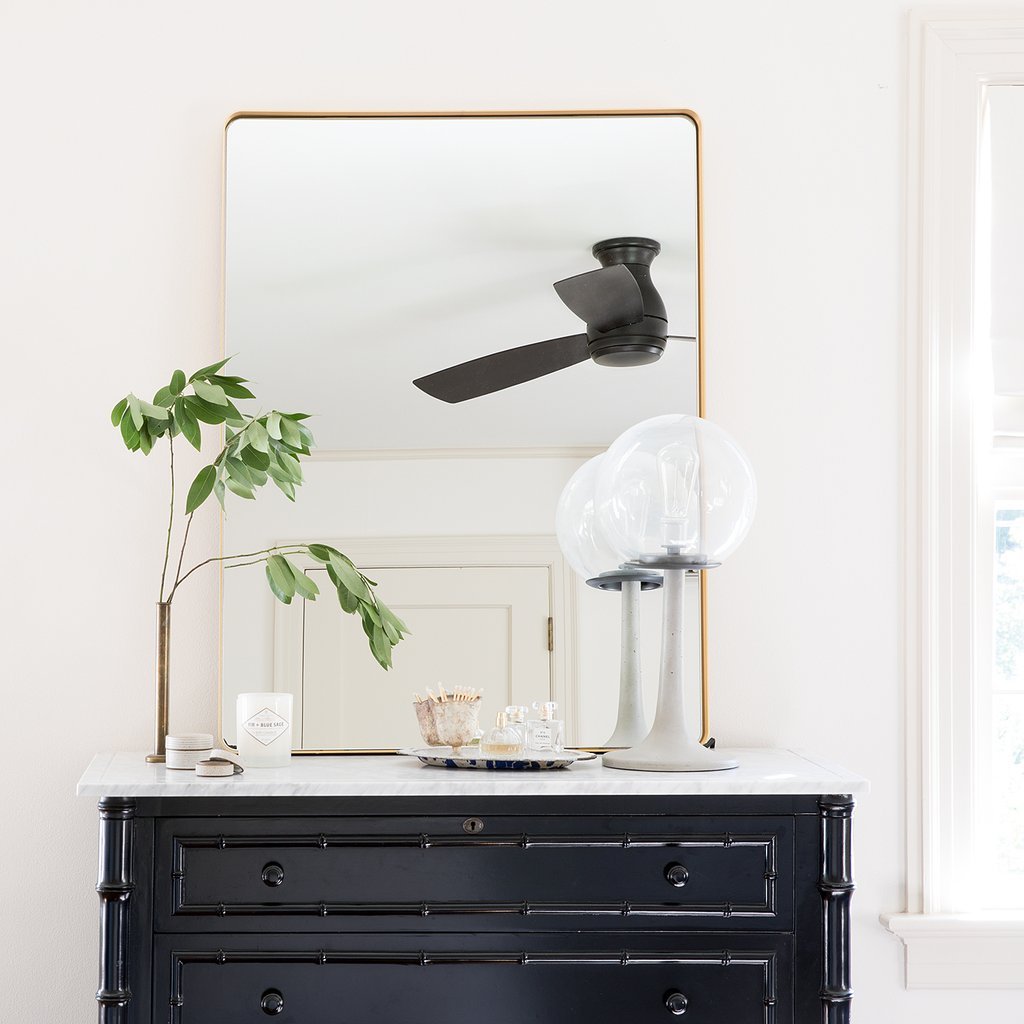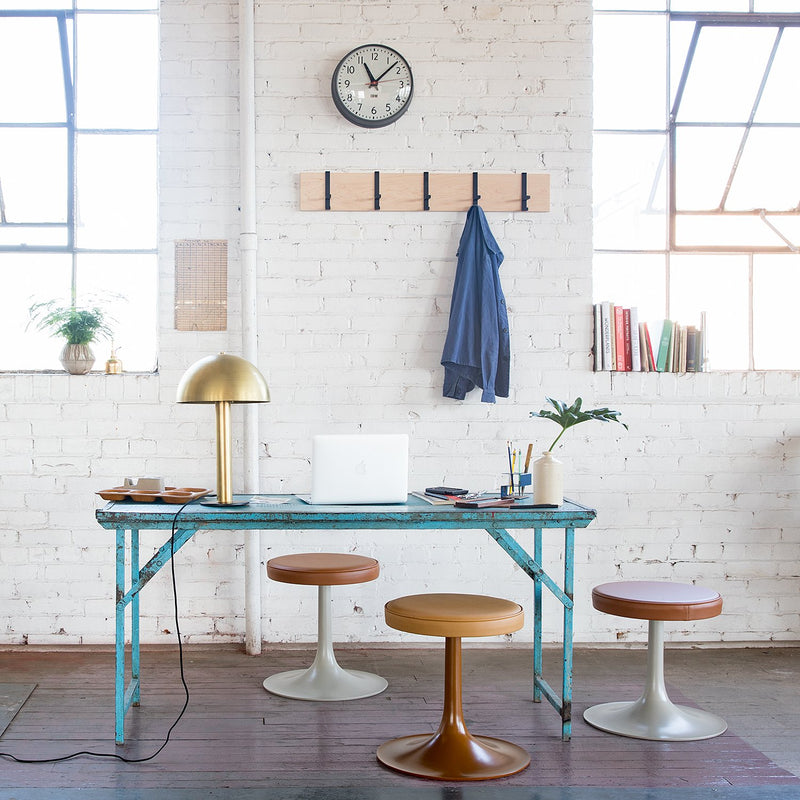Design-Driven: The Leo Mirror


When developing the Leo Mirror, the latest mirror in the Schoolhouse lineup, the designers aimed to create something that felt special from the moment it arrives at your front door. The challenge was making a mirror that would continue to feel special throughout its life. “Our other mirrors are meant to be accents in a room, but the Leo was meant to be the center of attention,” says Product Development Lead Katie Elliott. “That’s why we named it after the astrological sign. Leo's have a magnetism that draws people to them.”
It’s the proportions that make the Leo so special. The 30” X 40” Leo Mirror is the largest Schoolhouse mirror to date, but thanks to a low profile and sleek lines, it’s not clumsy or bulky. The ratio of height to width make the rectangular model well-suited for both landscape and portrait mounting. In both the round and rectangular models, the aluminum frame offers just enough visual weight to contain the fluidity of the glass. “Our main focus was drawing attention to the material connection and the subtle reveal between the glass and aluminum frame,” says Creative Manager Jorie Garcia.

The simplicity of the design is carried through by the meticulousness of the craftsmanship. Skilled glass cutting shows its value in the precise reveal that borders the entire mirror surface. Subtle weld and buff marks shows that this is a handmade piece. Each of the three finishes (Aluminum, Black Anodized, and Gold Anodized) help to protect the metal from corrosion and staining, making the mirror an ideal choice for bathrooms or other high-humidity environments. The refined color options are flexible enough to fit in with almost any décor.
Like many products at Schoolhouse, this elegant and versatile mirror came about as the result of a little bit of inspiration, a little bit of aspiration, and a lot of problem solving. The minimalist profile was inspired in part by a mirror Schoolhouse founders Brian and Jill Faherty had custom-made for their home. This original mirror had a timeless simplicity that harmonized well with their particular aesthetic (a style one might arrive at were they to reverse engineer our most iconic Schoolhouse products.)
But this mirror was so heavy that it had to be installed by its maker. Since weight is a common problem for mirrors, finding a way to reduce the overall heft product became part of the designer’s mandate. The team turned to aluminum for its high strength-to-weight ratio.

The next problem was figuring out how to make a perfectly even reveal between the mirror and the frame to give the glass the appearance that it’s floating in the frame. Assembling the mirror so that the reveal is perfectly even without having any additional brackets holding the glass in place isn’t easy. Having this reveal also required that the supporting structure behind the glass be simple enough to not call attention to itself in the places where its visible through the gap. Cutting a rounded corner is no simple process, so the designers had to work with the glass supplier to come up with a way to hand-grind each corner to match the radius of the frame.
The other problem designers wanted to solve was the problem of wall mounting. For a mirror to be easy to mount, it needs to be lightweight, easy to level, easy to hang, and stable once mounted. With the first part already checked off the list, the designers looked for ways to achieve the other three elements. The system they chose is known as a French cleat mounting bracket which involves a wide plate with a level built into it. Once this plate is attached to the wall, the mirror can simply be slid down on top of it and the bracket will catch it without fuss. Not only does the mirror sit level, it’s also much more stable than most traditional systems.
The final piece of the puzzle was developing packaging that would allow a mirror large enough to serve as a bathroom mirror to be shipped around the world without getting damaged in the process. The engineering team designed, prototyped, and tested a system that has proven to be very effective. (They ship mirrors to our New York store and back to test the functionality of the system.) According to the design team, packaging the mirror for shipping actually takes longer than assembling the mirror.
Pulling the Leo Mirror across the finish line for its Summer debut took the work of many, many hands. The development process took nearly 18 months of drafting, prototyping, development, and testing. Only by working with trusted, long-time aluminum and glass vendors could the designers find solutions to the most pressing problems. “This mirror has touched more departments in Schoolhouse than any other product we’ve ever created,” says Schoolhouse Product Management Lead Kate Richard.

A mirror may be straight forward in its function, but creating one with the timeless appeal is no small task. Or as Katie Elliott says, “Simpler is always harder.”

